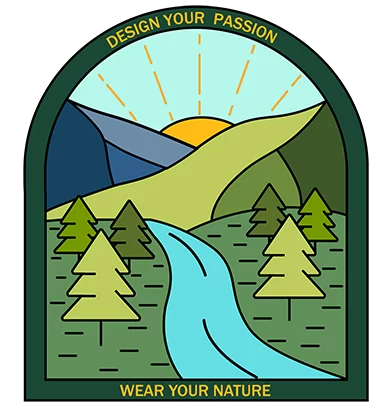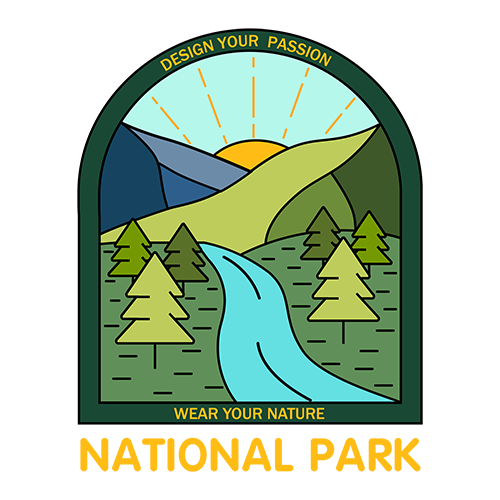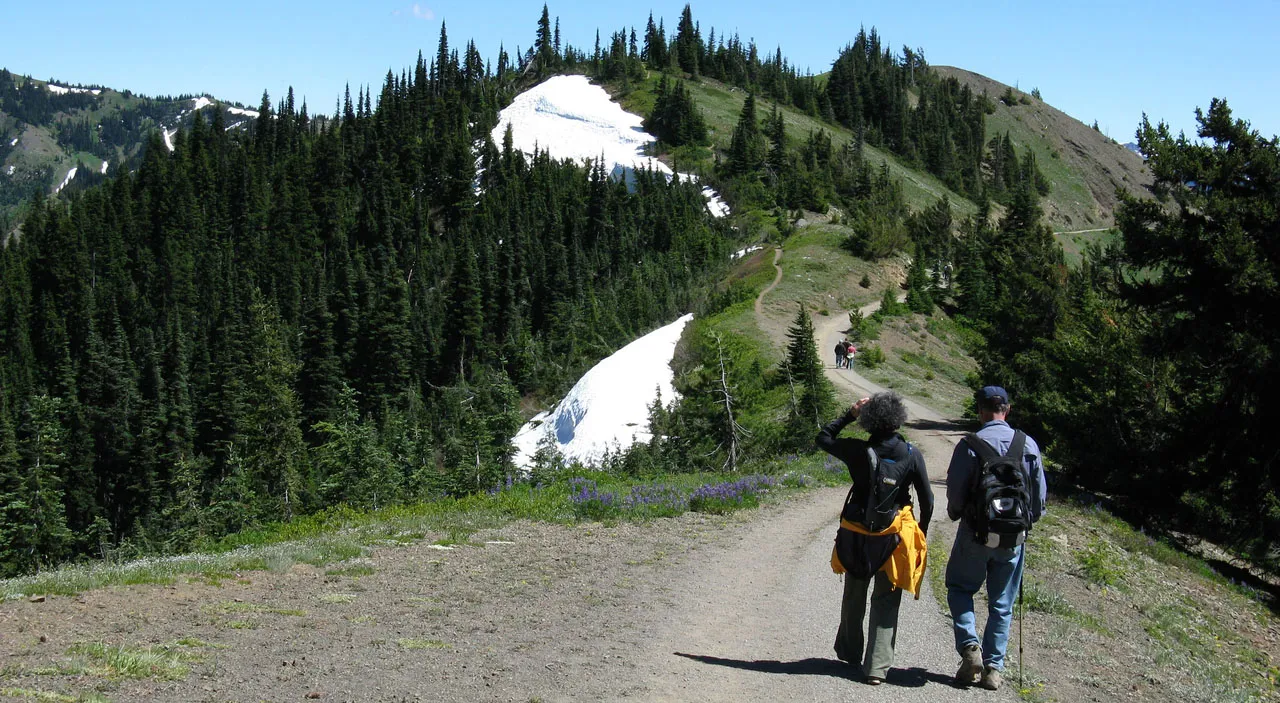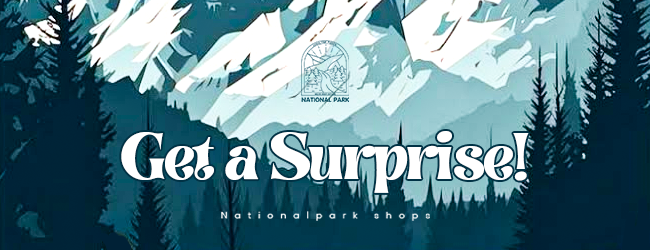Olympic National Park
Olympic National Park is a vast and diverse wilderness area in Washington on the Olympic Peninsula. This natural wonder is renowned for its stunning array of landscapes, from rugged coastal shores and lush temperate rainforests to snow-capped mountain peaks and serene alpine meadows. Whether you’re an avid hiker, a nature enthusiast, or simply seeking a peaceful retreat, Olympic National Park offers an unforgettable experience.
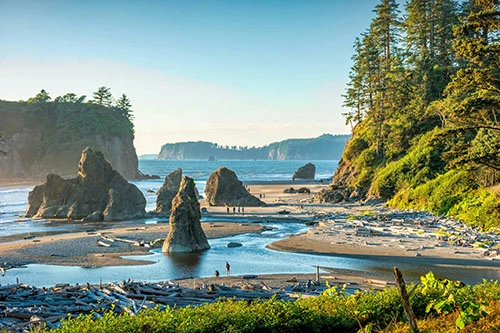
Olympic National Park Overview
Olympic National Park in Washington State preserves a vast wilderness, centuries of human history, and diverse ecosystems including glacier-covered mountains and rainforests. Originally designated as a national monument in 1909, it was renamed Olympic National Park by President Franklin Roosevelt in 1938. It was later recognized as an International Biosphere Reserve in 1976 and a World Heritage Site in 1981.
Encompassing nearly one million acres, the park offers three distinct ecosystems – glaciated mountains, rugged Pacific coastline, and lush temperate forests – each with unique plant and animal life for nature enthusiasts to discover. With over 95% of the park designated as wilderness, it boasts one of the largest protected wilderness areas in the contiguous United States, allowing visitors to experience pristine nature and solitude unlike many other places.
The park’s 73-mile coastline features rocky cliffs, sandy beaches, vibrant tide pools, and eroded sea stacks that support a variety of marine and intertidal wildlife. The diverse forest communities within the park are home to a range of species, from cranberry bushes to ancient spruce trees. The towering mountain ranges, shaped by tectonic forces, are crowned with ancient glaciers. Visitors to Olympic National Park can observe sea otters, whales, beavers, bears, rhinoceros auklets, golden eagles and more, while also encountering endemic species like the Olympic marmot and Olympic torrent salamander found nowhere else on Earth.
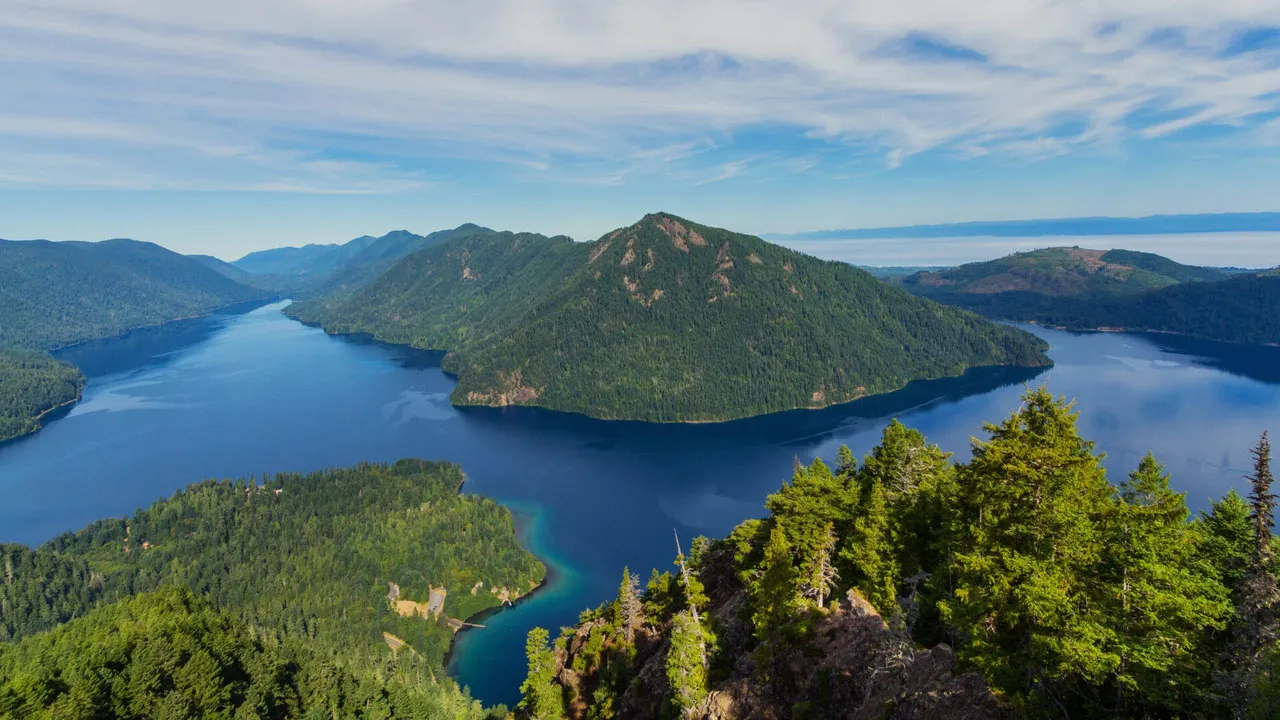
Things to do in Olympic National Park
Olympic National Park offers a vast array of activities and attractions for visitors to enjoy. From serene coastal explorations to challenging mountain hikes, there is something for everyone in this natural wonderland.
Boating
The calm lakes in Olympic National Park are perfect for paddling, offering a chance to explore the untouched shores, spot wildlife, and enjoy the peaceful surroundings.
Lake Crescent, a crystal-clear glacial lake on the park’s northern side, is a stunning location for a day of paddling. Visitors can rent kayaks, canoes, rowboats, and paddleboards from Lake Crescent Lodge and Log Cabin Resort.
Lake Ozette, the third largest lake in Washington, presents a more challenging experience with its rough waves and cold water. However, it is a rewarding place to explore, featuring boating opportunities and wilderness campsites along its shores.
Those interested in exploring saltwater should consider launching a kayak into the sheltered waters of the Strait of Juan de Fuca just north of the park. Here, you may have the chance to paddle alongside sea stars and seals.
Boat rentals are also available at Lake Quinault Lodge and Lake Cushman on the park’s southern side. These lakes offer picturesque paddling experiences against the backdrop of forested peaks.
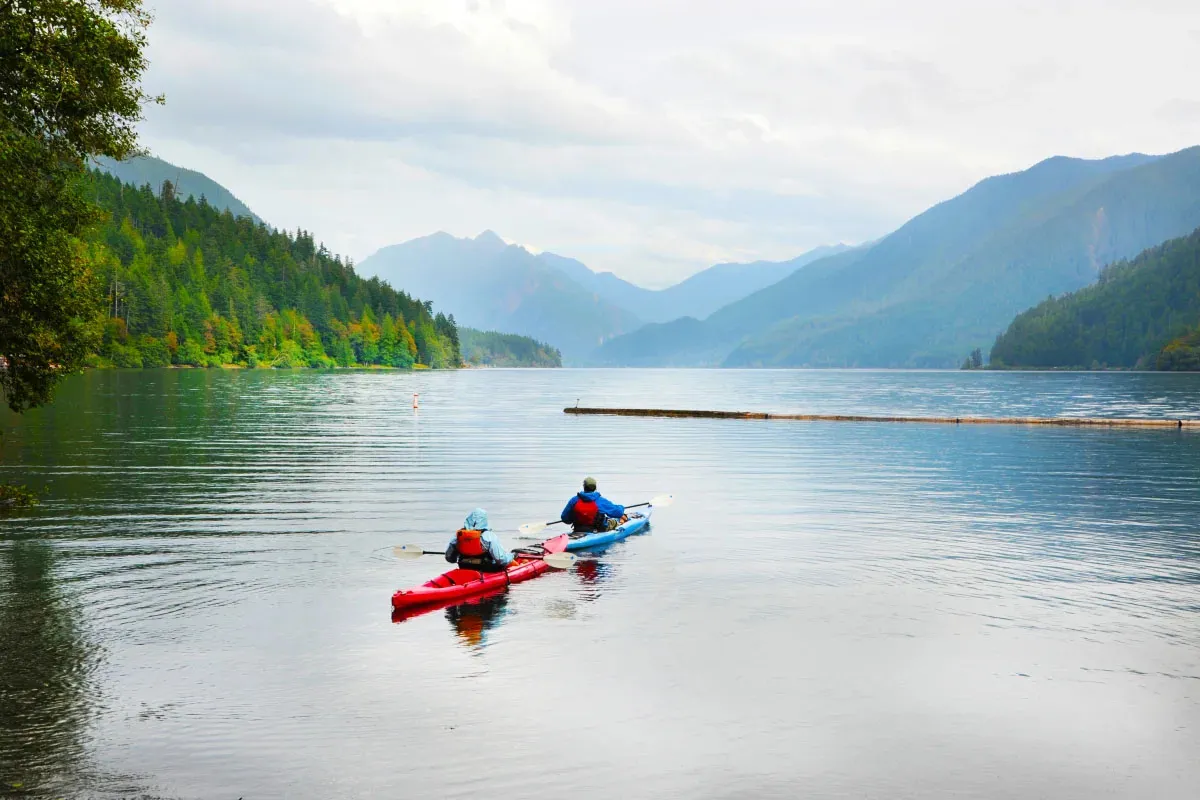
Fishing
Olympic National Park safeguards a vast area of the Pacific Coast, including 800 lakes, over 75 miles of coastline, and 4,000 miles of rivers and streams. These water bodies are home to diverse populations of wild salmon, trout and char, making it one of the last strongholds for these species in the Pacific Northwest.
The park’s mission is twofold: to safeguard the native fish populations and their habitats, and to offer recreational fishing opportunities. This is achieved through a robust management system that involves fisheries biologists, the State of Washington, and eight treaty tribes. Together, they annually set regulations on harvest and gear, ensuring that fishing practices remain sustainable.
If you plan to go fishing in Olympic National Park, it is essential to review the current fishing and shellfish regulations beforehand. Check bulletin boards for any locally posted changes in regulations to comply with the rules and help protect the delicate ecosystem.

See Big Trees Covered in Moss
Olympic National Park protects a unique habitat known as the temperate rainforest, mainly located on the west and southwest sides of the park. These rainforests are home to tall trees like western redcedars, hemlocks, Douglas firs, Sitka spruces, giant ferns, moss and lichen.
The Hoh Rain Forest is a popular spot to experience this ecosystem, but don’t forget about the impressive Quinault and Bogachiel Valleys in the park.
Olympic also home to several champion trees: The tallest Sitka spruce is 191 feet in Quinault, the tallest western redcedar is 159 feet on the Quinault Big Cedar Trail, the tallest Pacific silver fir is 220 feet in Bogachiel Valley, and the tallest Douglas fir is 281 feet in Quinault.

Hiking Mountain Trails
The inner alpine zone of Olympic National Park includes steep, rocky peaks reaching nearly 8,000 feet and meadows filled with wildflowers where mountain goats and marmots can be seen.
To reach the summit quickly, you can drive to Hurricane Ridge, where you can enjoy great views from the Day Lodge deck and access hiking trails. One of the best high-altitude hikes in all national parks is the Seven Lakes Basin loop, which can be completed in two or three days and provides stunning views of Mt. Olympus and the Hoh Rainforest below.
Hike to a Waterfall
The Olympic Peninsula is known for its two most popular waterfalls located within the national park boundaries on the northern edge.
Sol Duc Falls is considered the park’s main attraction. Visitors have two trail options: a 16-mile round trip easy hike from the roadside trailhead or a more challenging 6-mile round trip hike on Lovers Lane Loop starting from the Sol Duc Campground Loop B trailhead.
Marymere Falls may be a narrow stream of water, but its impressive 90-foot drop into a pool below impresses. The trail to the falls is just three-quarters of a mile from the Storm King ranger station at Lake Crescent, passing through thick wooded areas. The journey includes fern-bordered shaded trails, boardwalks, a bridge, and two overlooks, making it an enjoyable outing for the entire family.
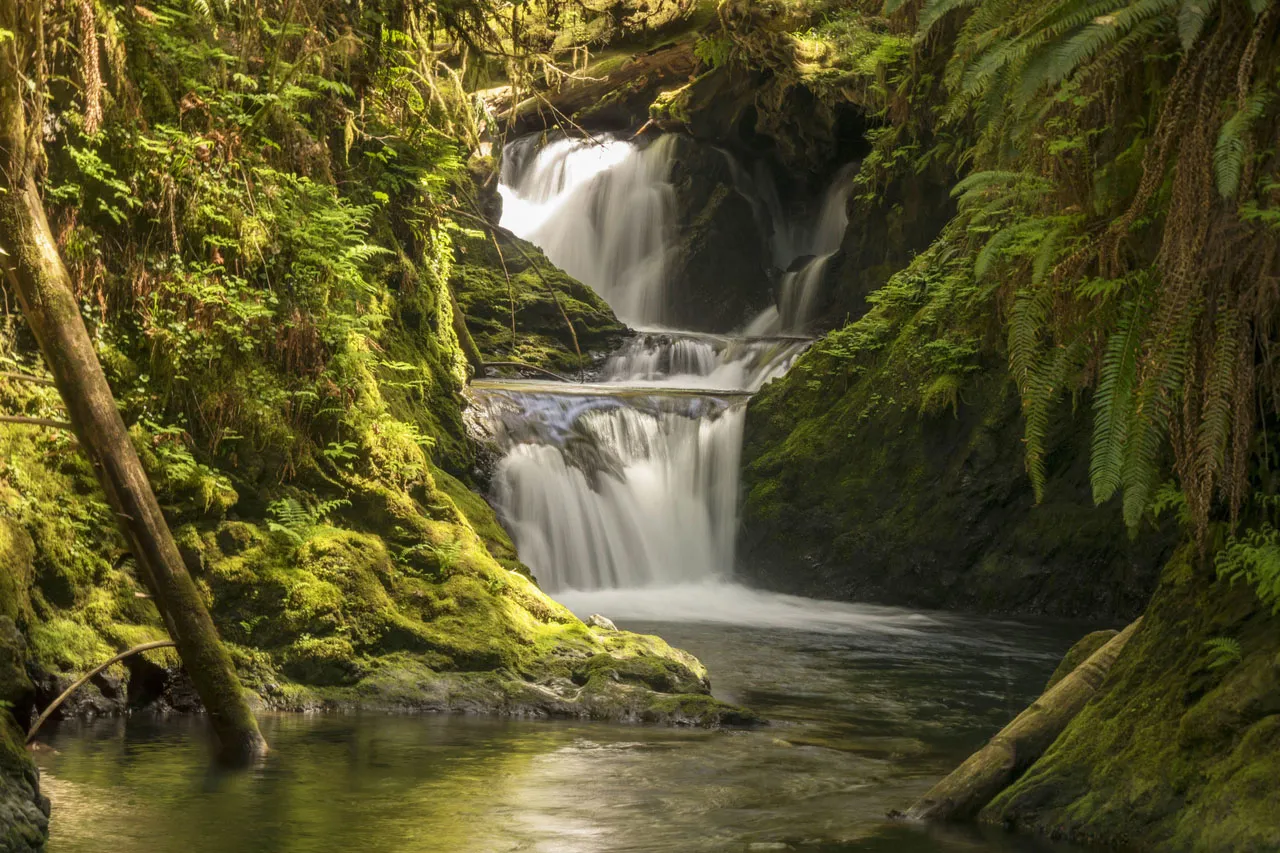
Skiing in winter
When it snows, the park remains open and transforms into a great place for winter activities. Hurricane Ridge is the place to visit on a snowy weekend, with a visitor center that has a warming hut and snack bar, as well as fantastic snowshoeing trails.
Before heading out, rest assured that the park takes your safety seriously, with park rangers always ready to provide you with the latest avalanche conditions. You can then venture out on the ungroomed route up Hurricane Hill, standing at 5,757 feet, to enjoy stunning views of the nearby peaks.
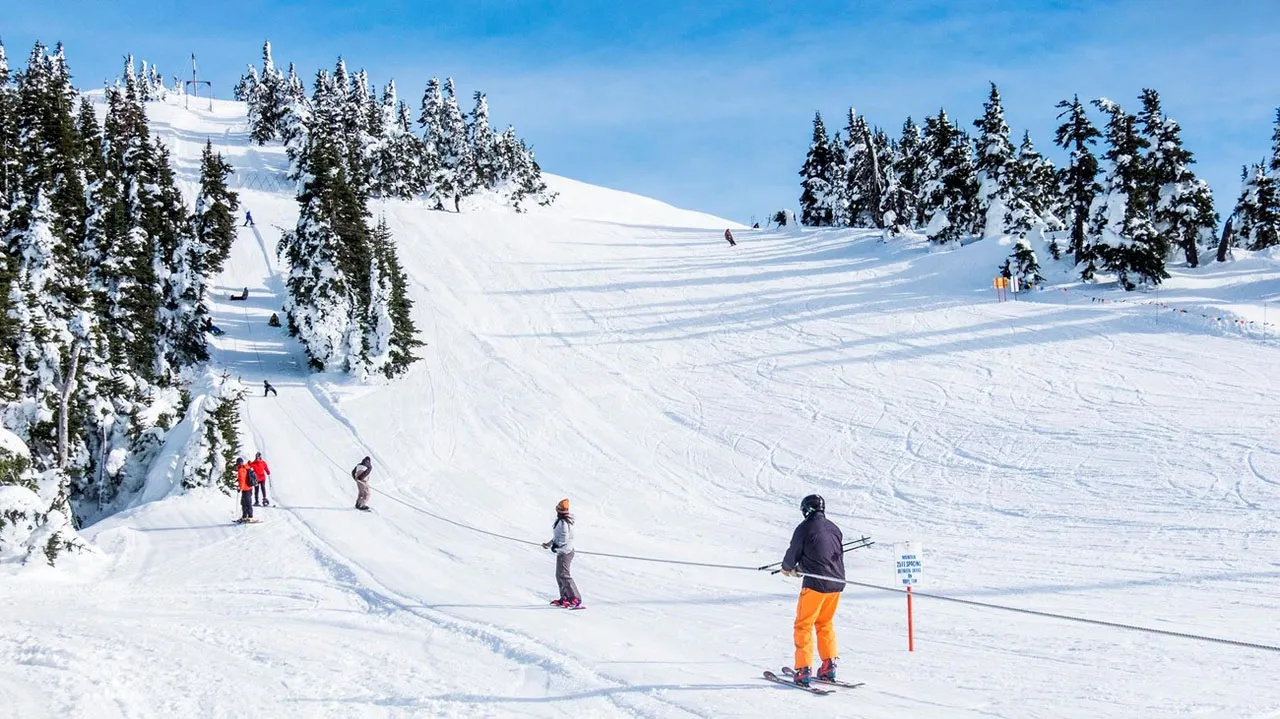
Camping Under the Stars
Olympic National Park offers a variety of stunning campgrounds that create lasting memories. The challenge lies in selecting one of the 16 frontcountry campgrounds to serve as your temporary home.
Consider camping at Deer Park or Heart O’ the Hills if you want convenient access to mountain hiking trails. Opt for Hoh or Graves Creek for a night surrounded by majestic rainforest trees. Except Kalaloch, these campgrounds operate on a first-come, first-served basis, so it’s advisable to arrive early during the summer to secure a spot.
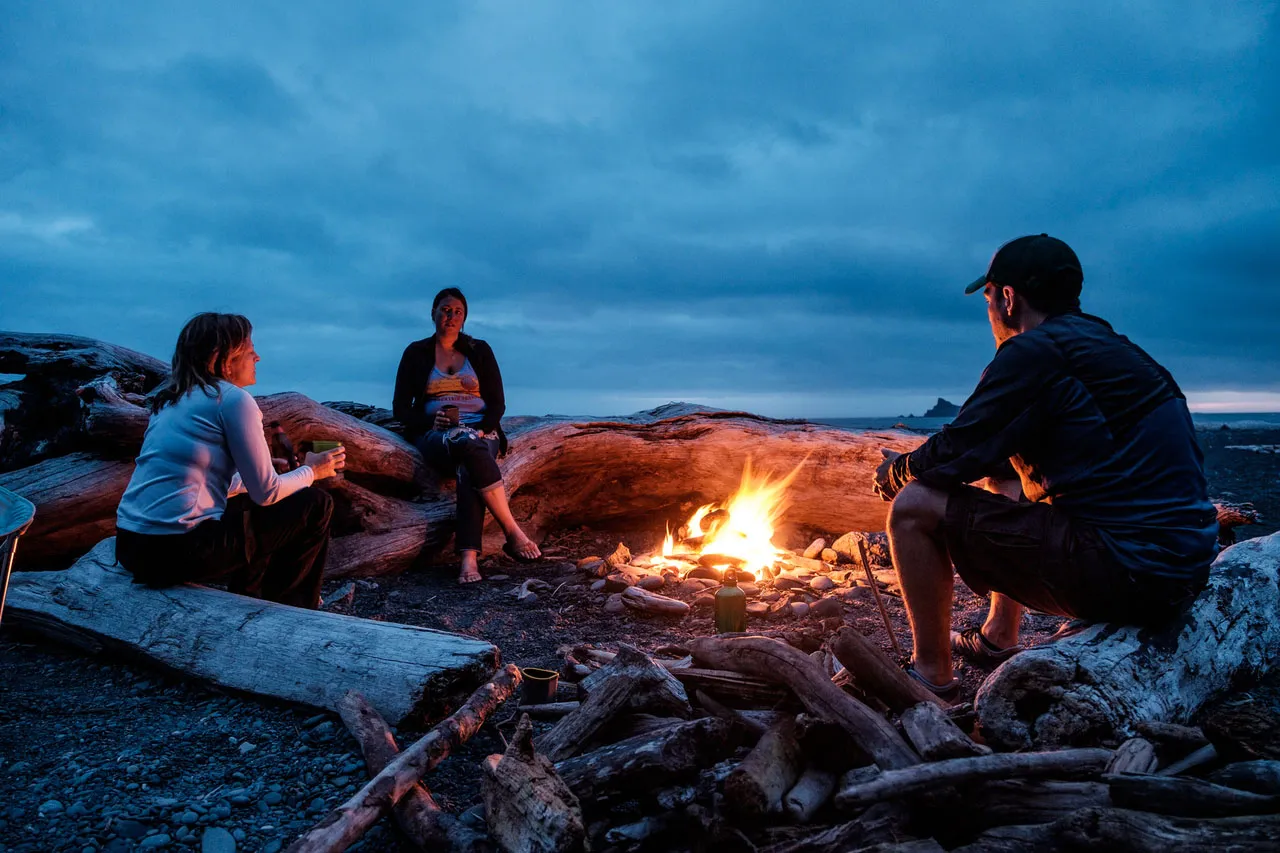
Art and Photography
Artists worldwide visit Olympic National Park to capture its beauty on canvas. Bring your painting supplies and find inspiration in the park’s diverse landscapes, whether a mountain peak, lush rainforest, or sandy beach.
During the summer, you can also join both scheduled and impromptu watercolor painting sessions at Storm King Ranger Station by Lake Crescent.
A picture is worth a thousand words. Olympic National Park’s varied environment and stunning scenery make it a top choice for photographers, amateur and professional alike. Whether you’re drawn to the lush forests, crystal-clear lakes, majestic mountains, or vibrant sunsets along the coast, Olympic offers endless opportunities for breathtaking shots.
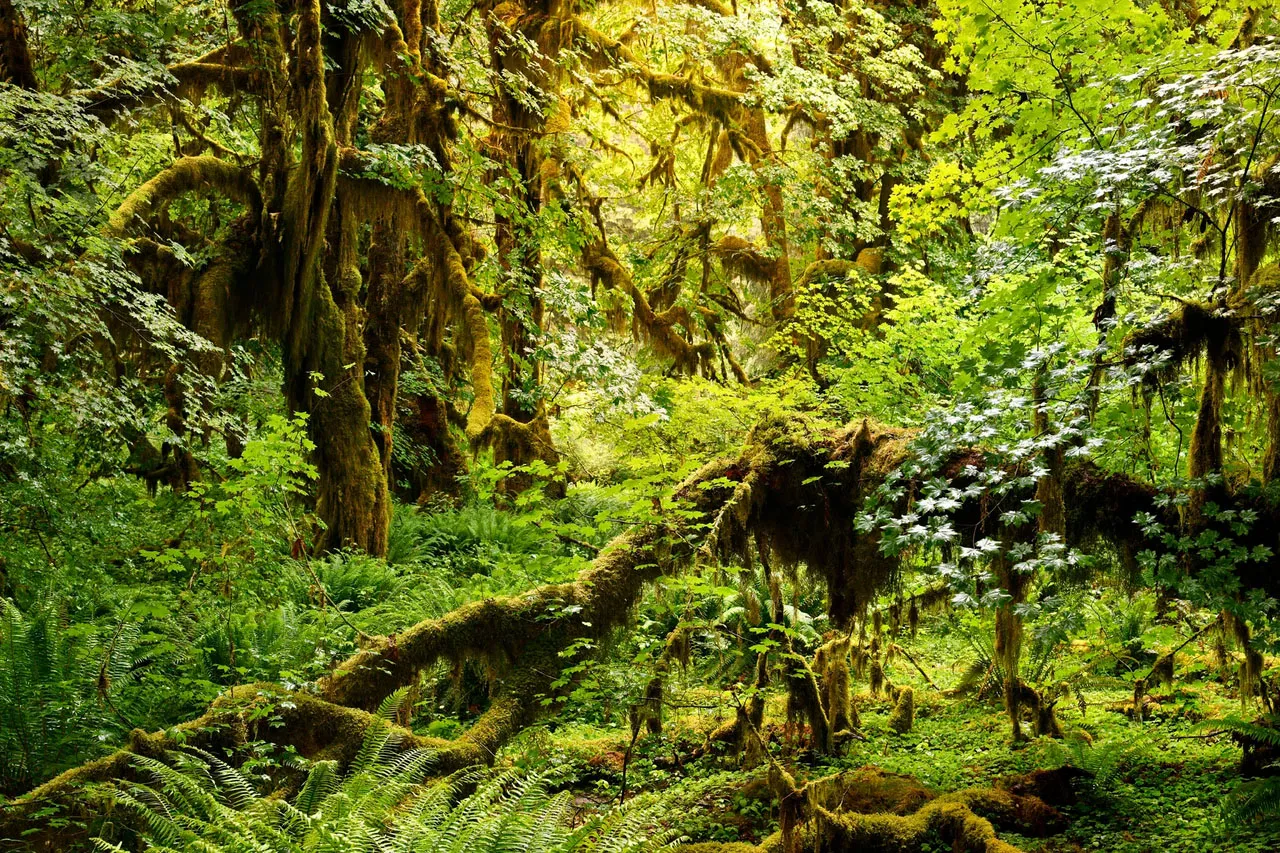
Wildlife Viewing
One of the primary attractions of Olympic National Park is the opportunity to observe a diverse array of wildlife in their natural habitats. From the iconic Roosevelt elk to the elusive Olympic marmot, the park is a true haven for nature enthusiasts and wildlife enthusiasts.
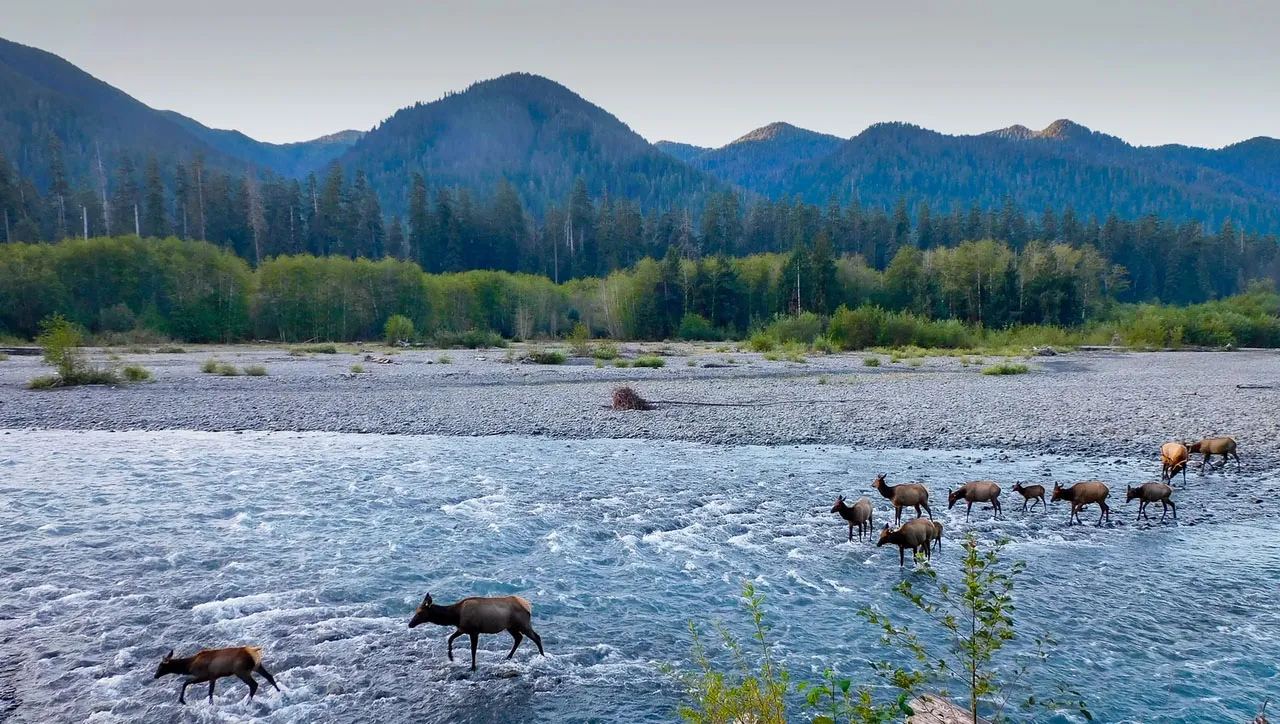
Places to stay in Olympic National Park
Olympic National Park offers a range of accommodation options, from rustic campsites to luxury resorts, catering to a variety of traveler preferences and budgets.
Camping
Camping is a popular and affordable way to experience the park’s stunning natural landscapes. The park offers numerous frontcountry and backcountry campsites, each with its own unique character and amenities.
Deer Park Campground: First-come, first-served – 14 total sites, $15 per night
Dosewallips Campground: First-come, first-served – No fee
Fairholme Campground: Reservations required – 88 total sites, $24 per night, $10 dump station fee
Graves Creek Campground: First-come, first-served. Self register at the campground – 30 total sites, $20 per night
Heart O’ the Hills Campground: First-come, first-served. Self register at the campground – 97 total sites, $24 per night
Hoh Rain Forest Campground: Reservations required – 78 total sites, $24 per night
Kalaloch Campground: Reservations required – 170 total sites, $24 per night, dump station is $10 per use
Log Cabin Resort RV & Campground: Reservations required – 38 total sites, $25-$44 per night depending on campsite and amenities
Mora Campground: Reservations required – 94 total sites, $24 per night, dump station is $10 per use
North Fork Campground: First-come, first-served – 9 total sites, $20 per night
Ozette Campground: First-come, first-served – 15 total sites, $20 per night
Queets Campground: First-come, first-served – 20 total sites, $15 per night
Sol Duc Hot Springs RV Park & Campground: Reservations required – 82 total sites, $33/night; dump station is $10 per use
South Beach Campground: First-come, first-served – 55 total sites, $20 per night
Staircase Campground: Reservations required – 94 total sites, $24 per night, dump station is $10 per use
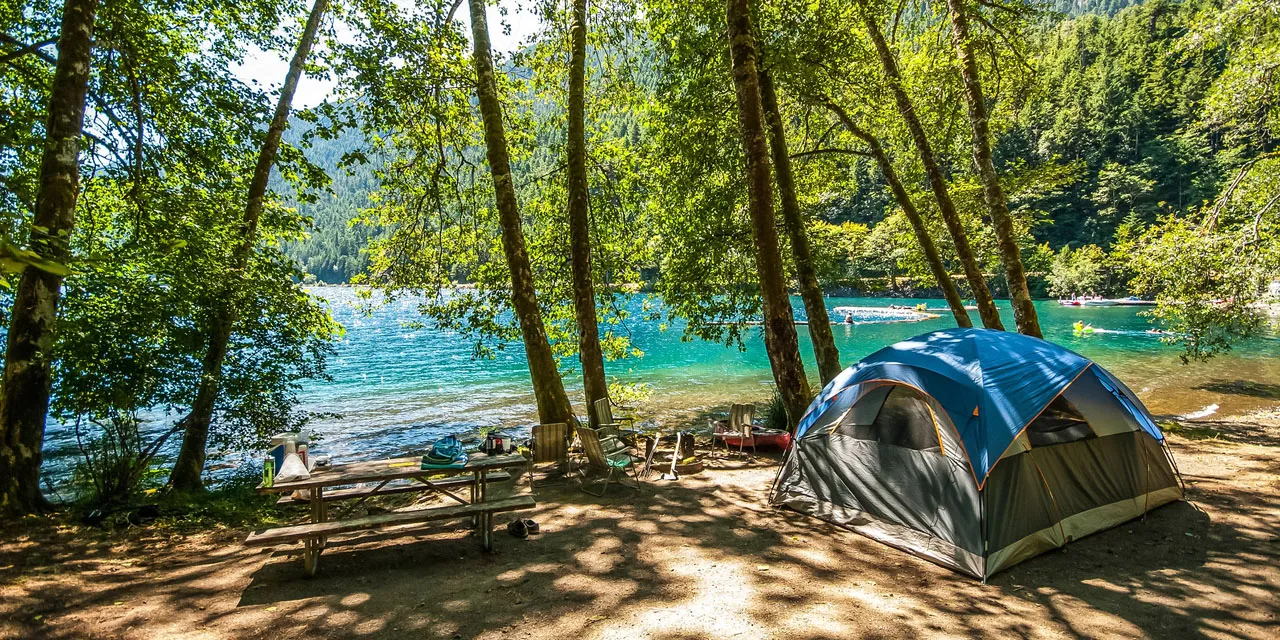
Hotel and Resort
For those seeking a more comfortable and amenity-rich accommodation option, Olympic National Park offers a variety of hotels, lodges and resorts.
Lake Crescent Lodge (3-star)
Located on the shores of the serene Lake Crescent, Lake Crescent Lodge provides a picturesque and peaceful retreat. The lodge offers cozy rooms, a lakeside dining room, and easy access to outdoor activities such as hiking, boating, and fishing.
- Address: 416 Lake Crescent Rd, Olympic National Park, WA 98363-8672
- Price Range: From $100

Sol Duc Hot Springs Resort (3-star)
Sol Duc Hot Springs Resort is a tranquil oasis known for its natural hot springs pools. Visitors can soak in the mineral-rich waters, stay in rustic cabins or rooms, and enjoy hiking trails and waterfalls in the surrounding area.
- Address: Sol Duc Road, U.S. 101 PO Box 2169, Olympic National Park, WA 98362
- Price Range: From $122
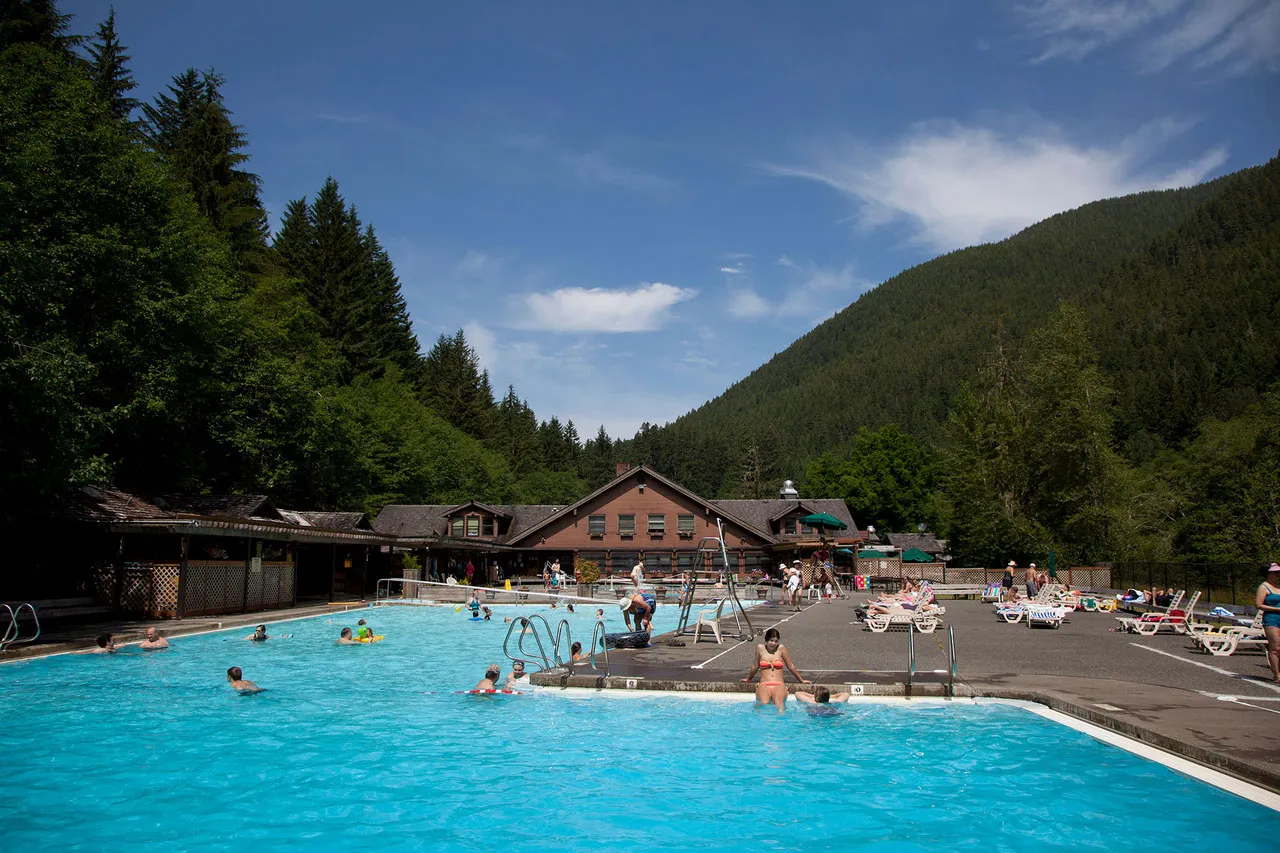
Kalaloch Lodge at Olympic National Park (2.5-star)
Kalaloch Lodge offers stunning ocean views and comfortable accommodations. Guests can relax in cozy cabins or rooms, dine at the lodge restaurant, and explore nearby beaches and tide pools.
- Address: 157151 Us-101, Forks, WA 98331-9354
- Price Range: From $227
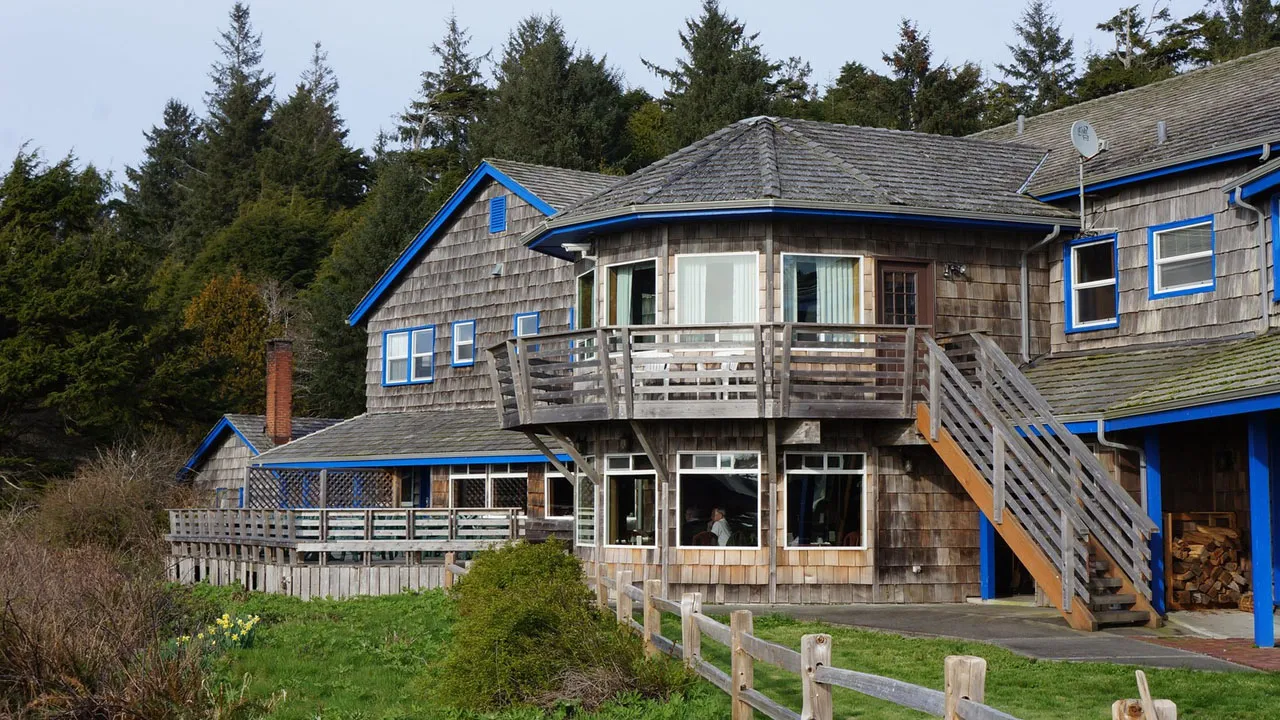
Dining
Whether camping under the stars or staying in a cozy lodge, visitors to Olympic National Park have a variety of dining options, ranging from casual cafes to fine dining restaurants.
Lake Crescent Lodge Restaurant
The dining room at Lake Crescent Lodge offers a charming lakeside setting and a menu featuring locally sourced ingredients and Pacific Northwest cuisine.
- Address: 416 Lake Crescent Rd, Olympic National Park, WA 98363-8672
- Open time: 7:30 AM – 9:00 PM
- Prices range: $10 – $50
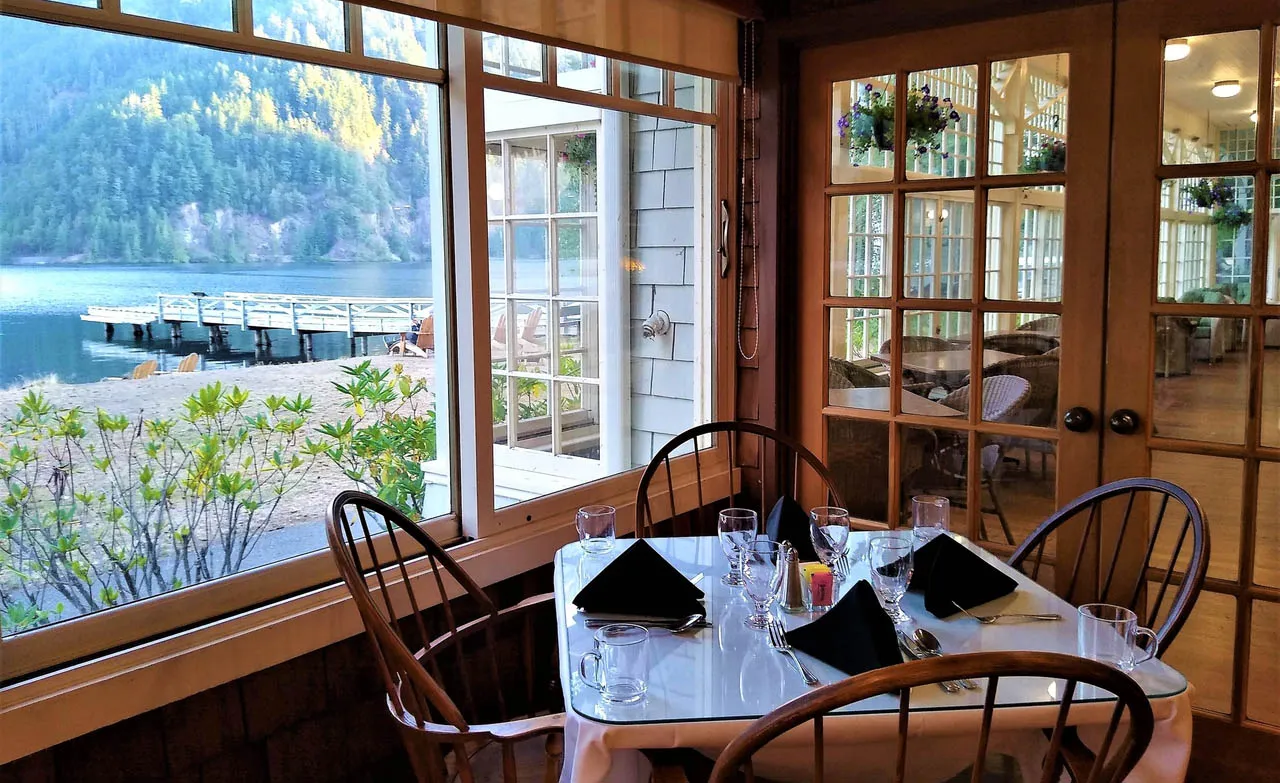
Hard Rain Cafe
Hard Rain Cafe offers visitors to the Olympic National Park a place to get a cup of coffee and a burger.
- Address: 5763 Upper Hoh Rd, Forks, WA 98331-9337
- Open time: 10:00 AM – 5:30 PM
- Prices range: $10 – $20
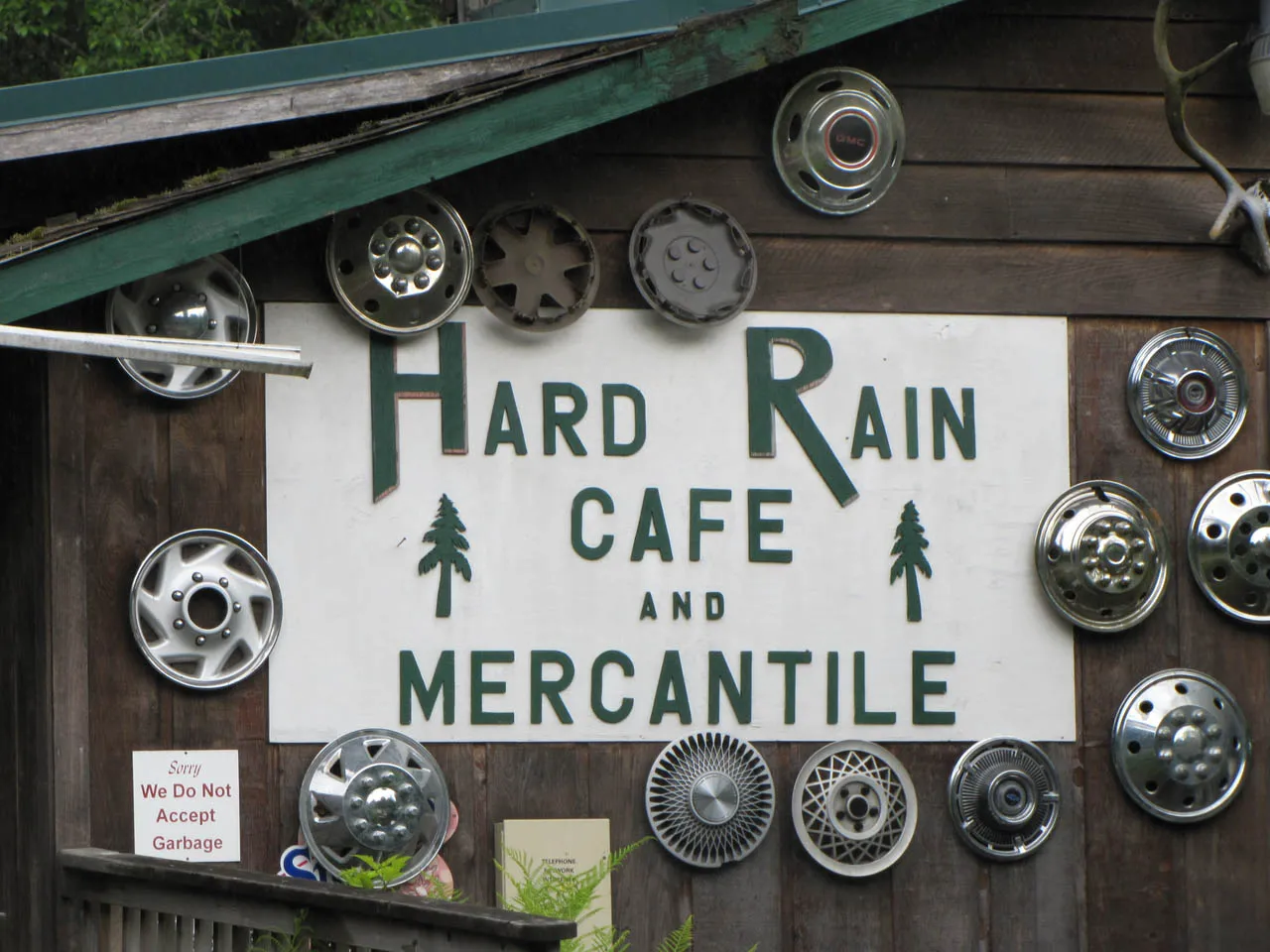
The Springs Restaurant at Sol Duc Hot Springs Resort
The Springs Restaurant offers a menu of comfort food classics and Pacific Northwest specialties. The cozy restaurant provides a welcoming ambiance for enjoying a satisfying meal.
Address: 12076 Sol Duc-Hot Springs Rd, Port Angeles, WA 98363, United States
Open time:
- 7:30 AM – 10 AM
- 12 PM – 2:30 PM
- 4:30 PM – 8:00 PM
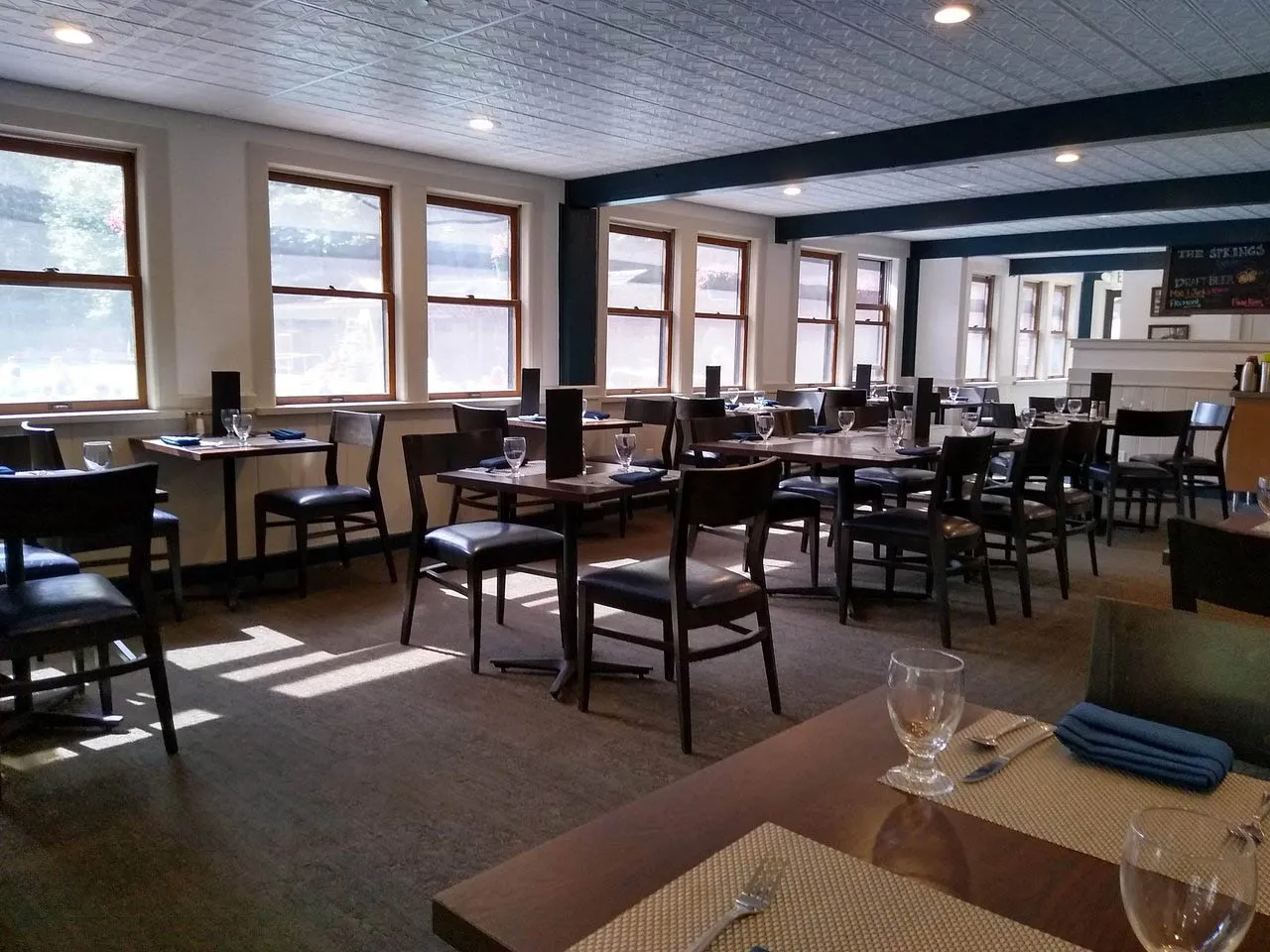
Planning Your Trip to Olympic National Park
Before embarking on a journey to Olympic National Park, it’s essential to plan ahead to make the most of your visit. From deciding the best time to go to choosing transportation options, careful planning can enhance your overall experience in the park.
Visiting Time
Olympic National Park is a year-round destination, each season offering unique opportunities for exploration and recreation. The summer months (June to August) are popular for hiking, camping, and wildlife viewing, while the winter season (December to February) transforms the park into a snowy wonderland ideal for skiing and snowshoeing.
Olympic National Park in Summer
Olympic National Park in winter
Hiking in Olympic National Park
Olympic National Park is a year-round destination
Transportation
Getting to and around Olympic National Park requires careful consideration of transportation options, especially given the park’s vast size and diverse ecosystems.
Many visitors opt to explore Olympic National Park by car, allowing flexibility and access to various scenic drives, trailheads, and points of interest. The park’s main roads, including Highway 101 and Hurricane Ridge Road, provide access to critical areas such as the coast, rainforests, and mountains.
For those looking to reduce their environmental impact or avoid driving, public transportation options are available for accessing Olympic National Park. From shuttle services to guided tours, visitors can explore the park while minimizing their carbon footprint and enjoying the scenery.
Olympic National Park Map
Conclusion
Olympic National Park stands out as a diverse and captivating destination that offers something for every nature lover and outdoor enthusiast. From the rugged coastline to the towering mountains, the park’s varied landscapes provide endless opportunities for adventure, relaxation, and inspiration.
With its rich biodiversity, stunning scenery, and array of recreational activities, Olympic National Park invites visitors to connect with nature and create lasting memories in one of America’s most cherished wilderness areas. Plan your trip, pack your gear, and get ready to experience the wonders of Olympic National Park firsthand.
Olympic National Park Photos
Q&A for Olympic National Park
Olympic National Park boasts a variety of attractions, including the Hoh Rainforest, Hurricane Ridge, Lake Crescent, and the rugged coastline of the Pacific Ocean. Each offers unique experiences, from hiking through old-growth forests to admiring panoramic mountain views and exploring tidal pools along the coast.
Rest assured, Olympic National Park has several visitor centers strategically located throughout the park. These centers are not just information hubs, but also your gateway to a fulfilling park experience. They provide valuable information about park activities, hiking trails, wildlife viewing opportunities, and ranger-led programs. You can obtain maps and permits, learn more about the park’s natural and cultural history, and even get expert advice on planning your itinerary. These visitor centers are your one-stop solution for all your park-related queries and needs.
Olympic National Park offers various outdoor activities, including hiking, camping, backpacking, fishing, birdwatching, and wildlife viewing. Additionally, visitors can explore scenic drives, take guided tours, participate in ranger programs, and enjoy picnicking in designated areas.
Deciding when to visit Olympic National Park? Let your interests guide you. Summer months (June to August) offer warm weather and clear skies, making it ideal for hiking and camping. However, spring and fall are also popular seasons for wildflower blooms and autumn foliage, perfect for nature enthusiasts and photographers. Winter provides unique opportunities for snowshoeing and enjoying the park’s serene beauty with fewer crowds, a dream come true for solitude seekers. No matter the season, Olympic National Park has something special to offer.
Yes, Olympic National Park offers a variety of lodging options, including campgrounds, lodges, cabins, and backcountry campsites. Visitors can choose from developed campgrounds with amenities like restrooms, picnic areas, or more secluded backcountry camping experiences. Additionally, nearby towns like Port Angeles and Forks offer hotels, motels, and vacation rentals for those seeking alternative accommodations.
